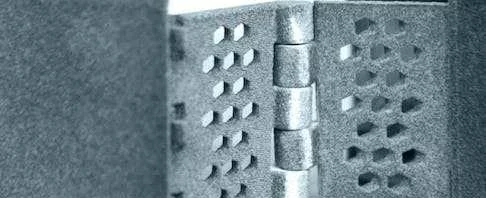Metals have relatively high shear moduli, ranging from lead (for example) on the softer side, to stainless steel on the more rigid end. Other materials like concrete, glass, and wood exhibit similar rigidity values but fall toward the lower end of the scale. With plastics, the shear modulus is an order of magnitude lower, showing notably low rigidity values. Rubber is given as an example of a solid (viscoelastic) material that is valued specifically for its low rigidity.
How Are the Values of Shear Modulus Expressed?
The values of shear modulus are expressed most often in Gigapascals. The modulus is the ratio between the shear stress exerted on the material (as a force per unit area) and the shear strain (or displacement) of the material surface. The result is expressed as a single value, technically in units of Pascals. However, because most useful shear modulus values (of common metals, for example) are in the range of 5×1010 Pa, values of shear modulus are usually expressed using units of Gigapascals (GPa). That turns a cumbersome 5×1010 Pa value into a shear modulus of 50 GPa, making it much easier to report.
Values of shear modulus can also be expressed in units of psi, but the values then need to be given in scientific notation due to their size. Our example shear modulus of 50 GPa would thus be expressed as 7.3×106 psi.
What Material Has the Highest Shear Modulus?
Diamond has the highest known shear modulus, usually reported in the range of 480-520 GPa. This is an order of magnitude higher than most metals. Diamond also has the highest Young’s modulus, making it renowned as the hardest natural material in the world. Diamond is very stiff; even when placed under large stresses (forces) it will experience very little displacement (the strain is low).
Diamond has the highest shear modulus due to the covalent bonds in its carbon lattice. The carbon atoms form a specific diamond cubic crystal structure which packs them in very tightly and thus makes the lattice very hard. However, diamond is not particularly resistant to breaking because they can be cleaved along specific planes.
What Does a High Shear Modulus Indicate?
A high shear modulus indicates a very rigid material — one which is not easily deformed by significant stress. This indicates that the material is hard.
A shear modulus above 50 GPa is broadly considered high, as most soft metals have shear moduli of 40 GPa or lower. However, the moniker of high or low modulus depends heavily on its specific application. Its shear modulus needs to be considered against the needs of the application and the other materials that will share its engineering space.
What Does a Low Shear Modulus Indicate?
A low shear modulus indicates a material that is relatively easy to deform. A small amount of stress (force per unit area) exerted on the material will distort it.
Generally speaking, any shear modulus below 10 GPa could be considered low — a single human will be able to deform such material by hand without much trouble. However, the suitability of any material’s shear modulus must be judged relative to its application and to the potential alternative materials one might consider.
What Is the Shear Modulus Symbol?
Shear modulus is represented by an uppercase letter G. In some contexts, the symbols S or μ have also been used for shear modulus, but they are less common.
How Is the Shear Modulus Determined?
Different tests can be used to determine shear modulus, with a number of variations in equipment and method depending on the nature of the material being tested. Most tests for solid materials are based on rotational torsion of rods or hollow cylinders. The ASTM D2236 standard, for example, uses a hollow cylinder with a pendulum (large disk) on the end and imparts a torsion (rotation) on the disk first in one direction, then the other. You can calculate the shear modulus by measuring the period of this torsion pendulum (i.e. the time between peaks).
Another method is a static torsion test. This test uses a rod of the material, twists it by a set angular distance, and then measures the stress. In this way, a stress vs strain relationship can be plotted for the material. Various ASTM standard testing methods apply a static torsion test to measure shear moduli, such as ASTM E143 for structural materials, or ASTM A938 for metallic wire as examples.
What Is the Shear Modulus Equation?
The equation for shear modulus is as follows:
.webp)



